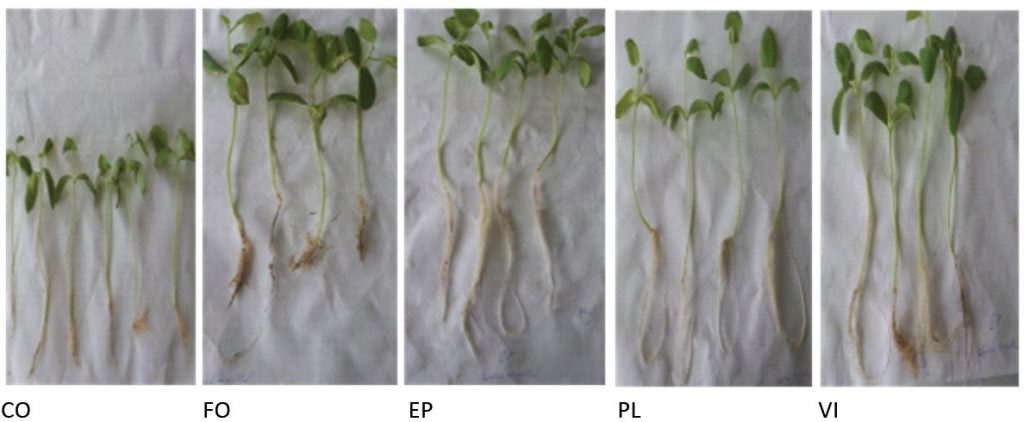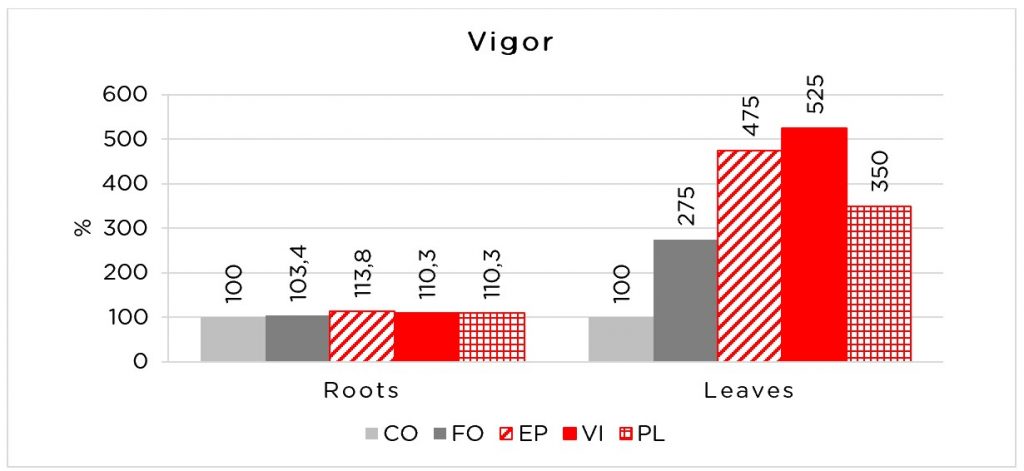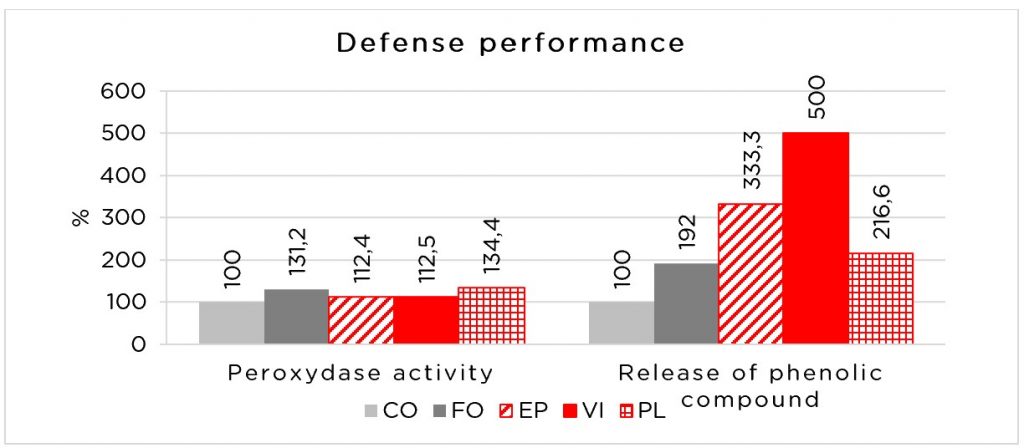The purpose of this study is to evaluate the effects of three SANBIO bio-stimulants on crop development and self-defense on melons and tomato recorded seven days after inoculation with soil borne pathogens causing wilting (Fusarium ox.) and air borne pathogens causing gray mold (Botrytis cinerea) under controlled conditions.
This project is being carried out within the collaboration between Laboratory of Plant Genetics and Molecular Biology, Department of Biotechnology and Plant Sciences, National Agronomic Institute of Tunisia and SANBOS GmbH, Germany.
1. Methods and material
Trials on melon plants were conducted as hydroponics by root-feeding with SANBIO products were subjected to biochemical and microbiological analysis. Seedlings obtained from sown seeds into peat were transferred into liquid media amended by oxygen through air pumps. After two days of acclimatation in growth chamber, tested products were added into the liquid nutritive media. The analysis by biochemical markers was achieved according to a time course on 7 days followed by the inoculation with the soil born pathogen causing wilting (Fusarium) or air born pathogen causing gray mold (Botrytis).
Table 1. Product and dosage information
| Code | Product name | Type | Dose per Liter | Composition | Producer |
| EP | Sanbio EPSOMIT | Natural mineral ferti-activator | 50 mg | Activated Magnesiumsulphate Heptahydrate | SANBOS GmbH, Germany |
| PL | Sanbio PLANTA | Natural mineral-organic ferti-activator | 75 mg | Activated blend of : Magnesiumsulphate Heptahydrate, Algae extract, beneficial microorganisms (Bacillus and Mycorrhiza) | SANBOS GmbH, Germany |
| VI | Sanbio VITAL | Mineral-organic ferti-activator | 75 µL | Activated blend of : Magnesiumsulphate Heptahydrate, Algae extract, Yucca extract, nutrients | SANBOS GmbH, Germany |
| REF | Fosethyl Al | Synthetic fungicide | 0.3 g | Phosphonic acid monoethyl ester aluminum salt | Bayer Crop Science, Germany |
| CO | Control | – | – | – |
Table 2. Time course and actions
Day |
Action |
|
Tomato |
Melon |
|
D-2 |
Start |
Start |
D0 |
– |
Treatment |
D+1, D+3 |
Inoculation with Botrytis |
– |
D+5 |
Inoculation with Botrytis |
Inoculation with Botrytis |
D+7 |
Evaluation of symptoms |
Inoculation with Fusarium |
D+15 |
Evaluation of symptoms |
|
2. Results
2.1 Plant vigor

Figure 1. Evaluation of plant vigor

Figure 2. Evaluation of vigor of roots and leaves
A remarkable effect on root and shoot growth of all three SANBIO products has shown 15 days after treatment and 7 days post inoculation with the pathogens. This is significantly higher than control and even the synthetic fungicide reference.
2.2 Defense performance

Figure 3. Evaluation of plant vigor and leave necrosis as marker for defense performance

Figure 4. Evaluation of defense performance
All three SANBIO products showed increased peroxidase activity, which increased continuously upon time post treatment. This shows that the hydrogen peroxyde pathway which is known to be involved in the defense mechanism of the plant.
The experiment shows clearly the effect of the SANBIO products on the strengthening of cell wall and also the activation of other defense mechanisms involving phytoalexin biosynthesis.
The activation of intracellular receptors leads to increased sensitivity towards pathogen attacks. The fast triggering of immune response can be observed as smaller size of necrosis areas on the leaves. The programmed cell death (PCD) is an evidence of activated various highly regulated defense mechanisms.
3. Conclusion
This study shows clearly the effects of tested products on melon and tomato and the possibilities to contribute in reducing fungal disease by preventive application.
The obtained results by following the kinetics of root and shoot growth in addition to the peroxydase activity as well as the phenolic compounds release showed clearly the difference to the control and the synthetic fungicide reference.
All these results confirm the potential of these organic products to be used in the context of organic farming as well as conventional one in Tunisia.